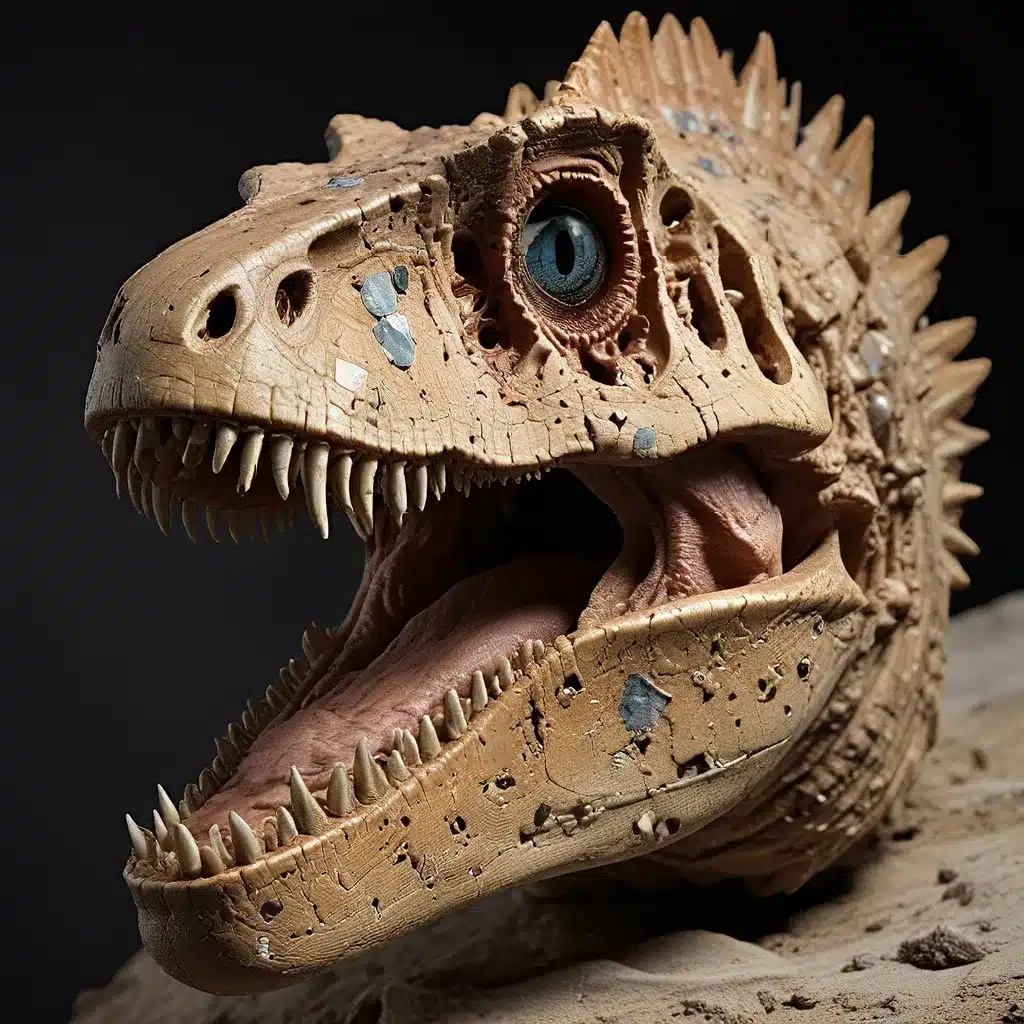
Unveiling the Secrets of the Jurassic Era
The Jurassic period, spanning from approximately 201 to 145 million years ago, was a time of remarkable diversity and evolution in the animal kingdom. This era, often referred to as the “Age of Dinosaurs,” has captivated the imaginations of scientists, historians, and the general public alike. Rare and remarkable dinosaur fossils have been unearthed around the world, providing invaluable insights into the lives, behaviors, and environments of these ancient creatures.
One of the most remarkable dinosaur fossils discovered in recent years is the Triceratops mummy. Unlike most dinosaur specimens, this rare find was discovered with some of its skin fossilized and intact, offering a unique glimpse into the physical appearance and texture of these iconic herbivores. The preservation of soft tissues, such as skin, is an extremely rare occurrence in the fossil record, making this discovery all the more remarkable.
Revealing the Predators of the Cretaceous
Alongside the herbivorous dinosaurs, the Jurassic and Cretaceous periods were also home to a diverse array of apex predators. One such example is the Acrocanthosaurus, a fearsome bipedal carnivore that roamed the early Cretaceous landscape. This prehistoric predator, known for its distinctive sail-like structure on its back, was one of the dominant hunters of its time, rivaling the more famous Tyrannosaurus rex in size and ferocity.
Another fascinating dinosaur fossil is that of the Gorgosaurus, an early form of tyrannosaur that lived during the Cretaceous period. This predator, while smaller in size compared to the iconic T. rex, still possessed an impressive array of sharp teeth and powerful jaws, making it a formidable hunter in its own right.
Exploring the Diversity of Herbivorous Dinosaurs
While the carnivorous dinosaurs often capture the public’s imagination, the herbivorous species were no less remarkable in their own right. Stegosaurus, a Late Jurassic herbivore known for its distinctive row of plates along its back, was surprisingly agile and nimble for its size, defying the commonly held perception of dinosaurs as slow and lumbering creatures.
Another herbivorous dinosaur that was widely distributed across North America was the Edmontosaurus, a duck-billed dinosaur that was one of the most common fossils found in the region. These plant-eating giants played a vital role in the Cretaceous ecosystem, helping to shape the landscape and maintain the delicate balance of the prehistoric food web.
Pterosaurs: Rulers of the Skies
The Jurassic and Cretaceous periods were not solely dominated by dinosaurs on the ground; the skies were also home to an impressive array of flying reptiles known as pterosaurs. One of the most remarkable examples is the Quetzalcoatlus, a massive pterosaur with a wingspan that could reach an astounding 35 feet (10.7 meters). These airborne titans were true giants of the prehistoric world, dwarfing even the largest of the terrestrial dinosaurs.
Aquatic Reptiles: Unraveling the Mysteries of the Deep
While the land and sky were filled with a diverse array of dinosaurs and pterosaurs, the Jurassic and Cretaceous periods also saw the rise of remarkable aquatic reptiles. One such creature is the mosasaur, a family of marine reptiles that dominated the Cretaceous oceans after the decline of the plesiosaurs and ichthyosaurs.
Even more remarkable is the discovery of a pregnant ichthyosaur fossil, which offers a rare glimpse into the reproductive biology and life cycles of these ancient marine reptiles. The presence of pups within the mother’s body provides valuable insights into the parental care and developmental stages of these fascinating creatures.
The Permian Extinction: A Prelude to the Age of Dinosaurs
Before the Jurassic and Cretaceous periods, the world witnessed one of the most catastrophic events in Earth’s history: the Permian extinction, also known as the “Great Dying.” This mass extinction event, which occurred approximately 252 million years ago, was the most severe of its kind, wiping out an estimated 96% of all marine species and 70% of terrestrial vertebrates.
Among the survivors of this cataclysmic event were the archosaurs, a group of reptiles that would go on to dominate the Triassic, Jurassic, and Cretaceous periods. Fossils of these early archosaurs, such as the herbivorous Desmatosuchus and the carnivorous Postosuchus, provide insights into the resilience and adaptability of these ancient creatures in the wake of the Permian extinction.
Unraveling the Mysteries of the Past
The extraordinary dinosaur fossils and ancient marine reptiles uncovered around the world continue to captivate and enlighten us about the wonders of the Jurassic and Cretaceous periods. From the rare Triceratops mummy to the colossal Quetzalcoatlus and the enigmatic pregnant ichthyosaur, these remarkable finds offer a window into the past, allowing us to better understand the diversity, evolution, and adaptations of these ancient creatures.
As the Lost Kingdoms continue to yield their secrets, researchers and enthusiasts alike are granted the opportunity to unravel the mysteries of the Jurassic era, shedding light on the profound impact these remarkable animals had on the shaping of our planet’s history.


